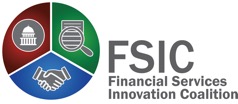
By Kevin B. Kimble, Esq.
April 4, 2016
While everyone waits for the CFPB to issue its rules on payday and small dollar lending, little is being done to improve access to credit in this space. For more than a decade, much has been tried at the federal and state levels to limit the harm some consumers have suffered from the use of certain credit products (namely payday loans). To that end, several states have enacted 36% APR rate caps and Congress has even established such a cap for military personnel.
These types of actions did much to eliminate access to payday lending, but forced those rejected by traditional lenders to turn to even less desirable lending products on the Internet. While Congress has mandated the CFPB focus on protecting consumers from predatory lenders, there are several critically important issues that legislators must address in order to create a landscape where safe and responsible credit products can be introduced.
Many people ask why the lending industry hasn’t filled this obvious lending void. The answer seems like it should be simple. However, there are significant roadblocks that limit the ability of innovative lending firms to serve this population. Congress could make minor changes to existing laws that would remove many of these roadblocks and spur significant growth in the alternative lending industry. What is needed at this moment is an understanding of the components of lending and a will to make the changes needed to empower lenders to innovate.
There exists an irreconcilable conflict between a need for innovation and an adherence to state supremacy in financial services matters. For instance, the consensus among activists and government agencies (FDIC and DOD) is that 36% interest is an acceptable rate cap, but many states have legislated rate caps significantly under this limit. Furthermore, bank regulators will not let banks make loans to the underserved population because they deem it too risky. And even a Community Development Financial Institution (CDFI), whose mission is to serve the underserved are limited because they are not able to charge 36% APR even in states where that is the legal limit. CDFIs have the further disadvantage of being limited by the geography of customers they can serve (making it hard for them to get a critical mass of customers to become commercially viable).
So even as the CFPB struggles to protect consumers from bad financial products, it has no ability to help fill the void, when it limits or eliminates the availability of certain products. “A chief concern is what will replace payday lenders if federal regulations force many to shut down” quotes a recent American Banker article (CFPB Faces a No-Win Scenario on Payday Lending).
In short, if policymakers are to make headway on this problem, these are the types of issues that must addressed. Until then, underserved consumers will be left with an ever-shrinking number of options when it comes to financial services.
Kevin B. Kimble is the principal of KBK Consulting Group and founder and Director of Policy Development of the Financial Services Innovation Coalition









